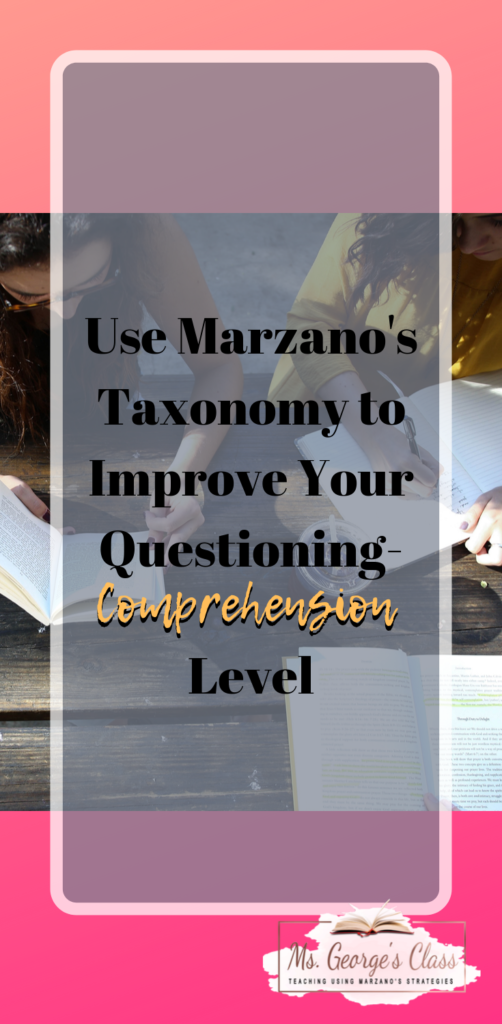
A series 2 of 4
Do you use the same questioning technique with your classes daily? Are your questions limited to the low level of retrieval? It is time to increase the rigor within your class and add some comprehension level questions into your daily routine. Robert Marzano created the Marzano Taxonomy, which helps teachers develop lessons and questions into higher-level thinking.
Marzano’s Taxonomy is composed of three main systems and one domain. The three systems are self-system, the metacognitive system, and the cognitive system. The self-system contains emotional issues connected with learning. Metacognitive is how goals are set and monitored, and cognitive is the processing of information. The one domain is the knowledge domain, and it relates to content and how it is presented. It is gathered through information, mental procedures, or physical procedures.
There are four topics in Marzano’s Taxonomy. They are:
1. Retrieval
2. Comprehension
3. Analysis
4. knowledge utilization.
The basic level is retrieval, and it builds up to knowledge utilization. As a teacher, you want to aim for student growth to reach knowledge utilization.
Comprehension is the second level of the taxonomy, and it includes integrating and symbolizing. According to Marzano’s Taxonomy of Educational Objectives, comprehension level includes, “identification of the critical or defining attributes of knowledge.” As you see, the identification of critical information is still a low level of the thinking process. The student isn’t generating a claim or comparing/contrasting; they are simply identifying or defining information.
Within the comprehension strand, there are integrating and symbolizing. Integrating is “articulating the critical versus noncritical elements of information.” Some examples include summarizing, outlining, and giving an open-ended response. When you have a student describe, ask a question, explain how, and identify how, you are asking them to integrate information to show comprehension.
Symbolizing is also under the comprehension strand. Symbolizing means, “depicting critical elements in nonlinguistic or abstract form.” Having students act out, depict, draw, show or use models is symbolizing. There is a lack of analysis in the task, but students are to use pictures or an abstract form to show what they know. You may ask them to draw a diagram, create a performance or skit, or design an illustration of a character. These are all forms of symbolizing and fall under the strand of comprehension.
Comprehension level is great for identifying critical information for a project, but to have students think on a high, critical level, I would combine comprehension with higher-level a skill such as analysis.
How You Can Use it in Your Class?

Comprehension level questioning has a place within the secondary classroom. While taking notes, students can create an outline or a mind-map, which are examples of comprehension. Many projects involve comprehension level work. Asking a student to draw, summarize, create, chart, exhibit, or graph shows their identification of critical information. During discussions, I often ask questions that begin with describe or explain how. I take the information I gather and decide if I need to review the topic or continue with the lesson. A teacher may use comprehension for a quick formative assessment or as an exit slip to design the next day’s lesson.

I use comprehension level questions during my mini-lessons, but the goal is to have students reach analysis and knowledge utilization questioning. Creating a lesson around a project that shows the identification of critical knowledge is good, but to make it better, you want to include an analysis component. For instance, when I taught The Tragedy of Julius Caesar by William Shakespeare, students chose their assessment. They could create a mobile, a poster comparing two characters, or a diorama of a scene. In addition, they always had to include a three-paragraph essay describing the scene. The essay component increased the level to analysis, and if I would have had them explain the relationship between two characters, the analysis would have been more rigorous.
How often do you use the comprehension level strand within your class? Do you think you would increase the rigor by moving the questioning level up a level? Leave a message below.




Leave a Reply